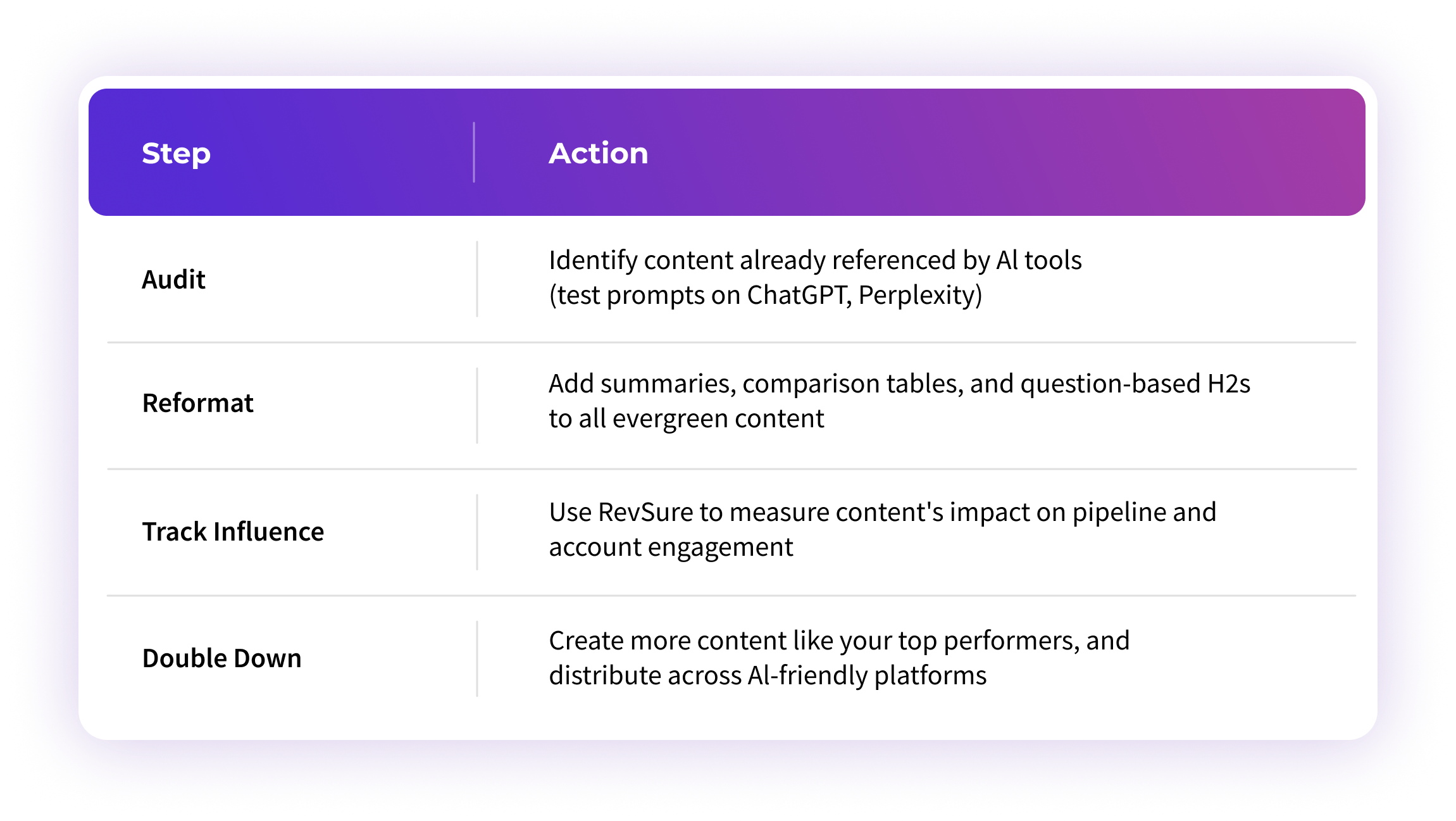

Book a Demo
Thank you! Your submission has been received!
Oops! Something went wrong while submitting the form.
The B2B buying journey is changing fast. What used to be a multi-month process involving analyst reports, vendor comparisons, and sales demos is now being compressed into hours, sometimes minutes. Why? Because Generative AI (GenAI) is reshaping how buyers research, compare and decide.
From ChatGPT to Perplexity and enterprise-grade copilots, GenAI tools have entered the B2B buyer’s toolkit, and they’re staying. According to Forrester, 89% of B2B buyers are already using generative AI to support purchasing decisions. That number alone should prompt marketing teams to rethink how they engage prospects across the funnel. This blog explores how GenAI is impacting buyer behavior, what that means for your go-to-market (GTM) strategy, and how B2B marketing teams can adapt to win in a world where buyers are assisted by machines.
Let’s start with the obvious: B2B buyers are under pressure to make faster, smarter, and more defensible decisions. Generative AI tools help them do exactly that by:
This means today's buyer can complete multiple phases of the funnel independently, without needing to engage with your brand directly, at least not until they’re nearly ready to buy. And the most critical part? GenAI tools are becoming the first touchpoint, not your website, email nurture, or paid ad.
1. Shorter Research Cycles
Buyers used to browse dozens of web pages, attend webinars, and download whitepapers. Now they ask ChatGPT something like:
“Compare RevSure, Dreamdata, and Marketo for full-funnel attribution.” And they get an instant, curated summary. That means less time engaging with your channels, and more time consuming AI-filtered content.
2. Rise of Anonymous, AI-Accelerated Research
Since GenAI doesn’t require user identification, your future customer might be researching you right now without ever triggering a form fill or visit in your analytics tools. This shift weakens traditional lead-based attribution models. You're influencing deals you can’t track.
3. Expectation of Instant Insights
Buyers no longer want to dig. They want pre-digested insights, benchmarks, comparisons, and product benefits served in clean formats. If your content is buried behind gated assets or unstructured copy, it won’t make the cut.
Let’s break down the implications for marketing teams:
Traditional playbooks fall short:
What matters now:
In short, content visibility is now divorced from clicks. You have to win mindshare, not just pageviews.
Let’s explore how to evolve your strategy across content creation, distribution, and measurement.
1. Create Content That Speaks to AI and Humans
To be visible in GenAI outputs, your content must be structured, concise, and insight-rich. Start with:
This increases the chance of your content being cited or summarized by ChatGPT or Gemini.
2. Use Proprietary Data & Strong Points of View
AI tools surface unique value—not generic content.
Publish:
These help your brand get cited, quoted, and remembered, whether or not someone lands on your blog.
3. Optimize for Zero-Click Discovery
Buyers might not visit your site, but your brand can still make an impression. How?
4. Distribute Content Where AI Agents Pull From
AI tools are trained on public data sources. Make sure your content appears on:
Repurpose high-value content across these platforms to increase the likelihood of being cited.
Let’s be honest: most attribution tools aren’t designed to handle invisible influence. If a VP of Marketing read a summary of your whitepaper inside Perplexity, brought it to her team, and only converted two weeks later via a partner webinar—you’d never know the content played a role. Traditional models like first-touch or even multi-touch can’t capture:
What you need now is full-funnel attribution with visibility into early-stage content influence.
While tools like ChatGPT and Perplexity don’t share user-level research data, that doesn’t mean you’re flying blind. RevSure helps B2B marketers connect the dots, before and after AI-assisted buying behavior shows up in pipeline.
Here’s how:
Here’s a 4-step roadmap to align your strategy with the GenAI reality:

Generative AI isn’t a passing trend; it’s a foundational shift in how B2B buyers learn, evaluate, and decide. Your future customers are already using it. That means your marketing must:
The brands that win won’t just optimize for search engines; they’ll optimize for intelligent agents, anonymous buyers, and AI-powered journeys. Generative AI has changed the game. With RevSure, you can play to win.

